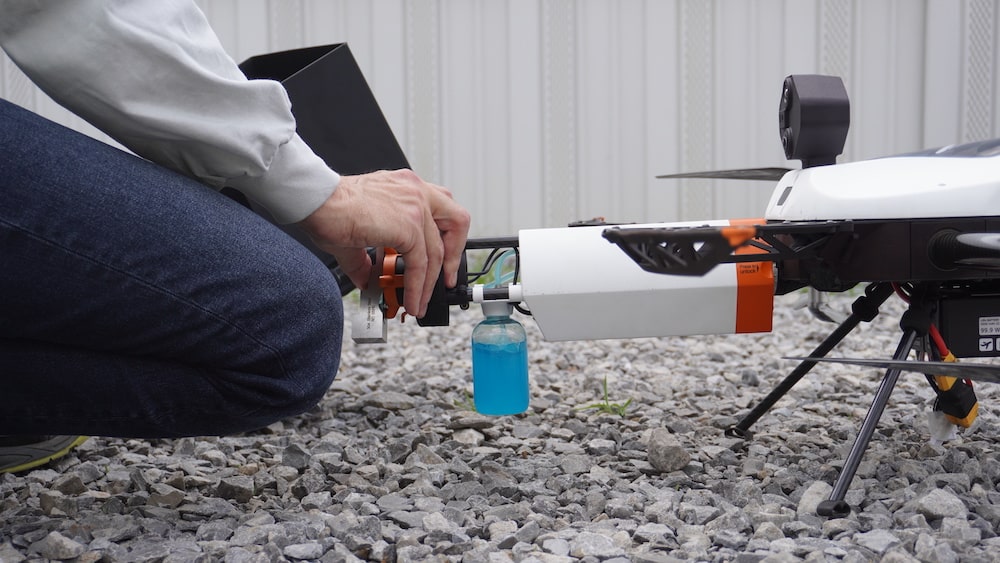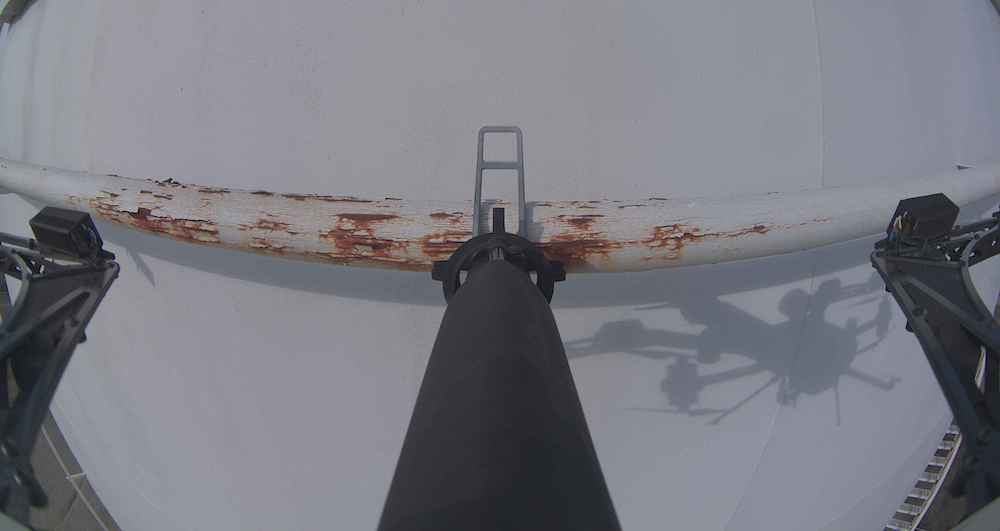
Thanks to decades of acoustic experiments, echolocation studies, and the discovery of the piezoelectric effect, humans have been able to adapt ultrasonic waves to industrial purposes.
Concrete, steel, ceramics, and glass, ultrasonic testing (UT) methods help identify asset defects with precision and no risk to the object or the operator.
Ultrasonic testing is a non-destructive testing (NDT) method that uses high-frequency sound waves to examine objects’ material characteristics and take dimensional measurements.
By analyzing the trajectory and timing of ultrasonic pulses, penetrating the test object, inspectors can detect surface-level flaws and internal discontinuities like fractures, cavities, or fiber debonding, as small as half the length of the sound wave. Such high sensitivity levels make UT an effective method for detecting cracks, voids, inclusions, and corrosion even at their early stages of propagation.
Another advantage of ultrasonic testing is its high versatility: You can scan metals, polymers, plastics, ceramics, fiberglass, and glass objects—pretty much all types of material except for foam, rubber, and certain acoustically transparent composites.
A standard ultrasonic testing setup has three main components: a pulser/receiver, a transducer, and a reading display. The pulser generates high-voltage electrical power, which stimulates a transducer to produce short sound waves between 0.1 and 15 MHz — frequencies that are not audible for humans or most animals.
These directional sound waves travel from a probe, bounce off an object (or a defect), and then transmit a signal back. A transducer converts the wave signal into an electrical impulse, which is depicted as graphs on a display device.

Source: MDPI.
The standard readings are:
By analyzing the wave travel time and velocity, the UT inspectors can accurately locate and characterize the defect, along with its size, orientation, and shape.
Ultrasonic testing is becoming increasingly automated thanks to recent technological advances. Drones with UT probes can perform inspection even on hard-to-reach surfaces. With artificial intelligence applied to the analysis phase, inspectors can draw more conclusive evidence from collected NDT data.
As a non-destructive testing method, ultrasonic testing is ideal for examining large industrial assets like flare stacks, wind turbines, storage tanks, pipes, and welds. With the right instruments, inspections can be performed in a few hours with minimal asset downtime.
Regular UT assessments are an integral part of many security certifications and protocols, such as:
Beyond these, ultrasonic tests are also performed for asset condition assessments across other industries.
| Industries | Defect types | Assets |
| 1. Aerospace 2. Automotive 3. Electronics & battery 4. Metals & casting 5. Oil & gas 6. Power generation 7. Construction 8. Chemical | 1. Cracks 2. Corrosion 3. Voids 4. Honeycombing 5. Holes 6. Lack of fusion 7. Porosity 8. Debonds 9. Inclusions 10. Fractures | 1. Flare stacks 2. Wind turbines 3. Large storage tanks 4. Tubes and pipes 5. Welds and joints 6. Shafts 7. Heavy machinery structures |
Ultrasonic inspection regularity depends on the object’s type, exposure to environmental factors (e.g., temperature, pressure, humidity), material, age, local standards, and even guidelines from the original equipment manufacturer (OEM).
Here are some timelines for different types of assets:
The longer the asset has been in use — the more frequently it should be inspected. Consider adding UT to your annual inspection plan to extend the life of your equipment and prevent unforeseen failures.
Ultrasonic testing is highly effective in both measuring object thickness (to find corrosion and holes) and detecting flaws (such as cracks, pores, debonds, and inclusions). Additionally, UT can help technicians determine the extent of a defect and its dimensions.
However, ultrasonic testing may generate faulty results on objects with irregular shapes, non-homogeneous structures, or rough materials.
Advantages of Ultrasonic Testing:
Disadvantages of Ultrasonic Testing
Ultrasonic inspection requires qualified technicians and ISO-certified/EN-compliant testing equipment. UT can be performed on assets in use if secure access to the area is available.
The technician evaluates the material’s properties, identifies the testing goals, and selects the right UT method, probe caliber, and scanning frequency.
Ultrasonic inspection involves the following steps:
Once a test is completed, UT technicians should record the asset details (manufacturer, condition, orientation), the test results, the inspection date, and any procedure deviations.
Source: thyssenkrupp Materials NA. Example of contact ultrasonic testing performed on a metal pipe.
UT can be done manually, mechanically, or automatically.
To perform a simple ultrasonic test, you’ll need a pulser/receiver, a transducer, a display device, and a coupling agent (oil, gel, or water). Certified UT technicians also use calibration blocks (for reference parameters), additional cables (to inspect large spaces), data analysis software, and drones.
The choice of equipment depends on the material structures, angles, and test types. For example, straight beam probes are used for ultrasonic thickness testing, while angle beam probes work better for weld inspection.
Today, you’ll see many versatile UT tools, combining transducers with pulse receivers into one compact device or drones carrying UT probes.
An ultrasonic transducer (also called a probe) features a piezoelectric element that converts electrical energy into sound waves and back. Transducers typically come in a variety of sizes and shapes and are the basis of any ultrasonic testing equipment. Transducers can be handheld or mounted on drones like Voliro single-element ultrasonic probe.
There are three main types of ultrasonic probes:
A pulse receiver is another integral part of any ultrasonic testing process. This device sends an electrical pulse to a transducer, which renders it into a sound wave. When receiving a signal back, the pulse-receiver reproduces it on a screen. Usually, manufacturers couple a pulser-receiver, transducer, and imaging device into one device.
Ultrasonic flaw detectors are advanced portable ultrasonic devices equipped with purpose-built probes for locating cracks, voids, or other alterations in metals, plastics, ceramics, and composites.
Standard detectors consist of an integrated pulser/receiver, ultrasonic transducer, and display device. They typically operate in the 500 kHz-10 MHz frequency range, detect flaws up to half the wavelength, and use single-element, dual-element, angle-beam transducers. Advanced devices may include phased-array probes, 2D matrix array capabilities, and real-time analytics software to better categorize flaws in test pieces.
EMATs are the newer generation of transducers that let inspectors perform tests without direct surface contact. EMATs use an electromagnetic field to generate ultrasonic waves by sending pulsed signals to the asset’s surface to cause mechanical vibrations.
The same coil used to generate the magnetic field, acts as a receiver. Ultrasonic waves propagate through the test structure, changing the magnetic field in the coil and generating electrical signals that can be analyzed.
Electromagnetic acoustic transducers have a wider frequency range, which allows detecting different types of acoustic emissions. For instance, Voliro’s EMAT payload for drones operates at a frequency of 3.5-4 MHz, allowing effective scanning of steel pipelines, titanium bearing structures, pressure vessels, and welded joints among other assets.
By using Voliro T drone with EMAT payload you can also perform AE tests at heights, even on assets with rough or coated surfaces. This reduces the need to build expensive scaffolding to reach the test site or removing protective coating that may interfere with piezoelectric transducer measurements.
For example, take effectively collect data about corrosion, wear, and freezing of fire suppression rings, placed inside chimneys and flares. Or inspect large cement kilns for refractory wear without calling for a cherry picker.

Source: Voliro. First-person view in a drone-based acoustic emission test with Voliro T.
Ultrasonic thickness gauges are devices used to measure the thickness of walls in pipes, tubes, and tanks made of metals, plastics, composites, fiberglass, and ceramics. The thickness-measuring tools calculate the time interval between the sent and received sound waves. Analyzing these indicators, UT technicians can estimate the severity of corrosion or spot thinning of walls.
In ideal conditions (smooth surface and optimal temperature), digital ultrasonic thickness gauges can provide measurements. Voliro ultrasonic transducer probe, for example, can perform thickness measurements at a thickness range of 2-150 mm (0.08-5.9 inches) and at a resolution of 0.06 mm / 0.002 inches.
Phased array scanners are advanced electronic devices that use a probe consisting of multiple piezoelectric crystals. These crystals independently transmit and receive ultrasound waves at different times. By sending so many impulses to the same area, phased array scanners can detect flaws, inspect welds, and measure thickness with better accuracy than other UT probes.
With phased array scanners, operators don’t need to manually move the probe across the tested zone. The scanner has a large area of coverage, thus speeding up data collection. With depth-focus scanning, they enable more reliable measurement of defects’ height and size.
Drones are another breakthrough in ultrasonic testing. They enable technicians to inspect remote areas and safely take measurements at heights. With feet firm on the ground, inspectors can scan for defects, take asset dimension measurements, and perform thickness evaluations.
Advanced NDT inspection drones like Voliro T shorten inspection times by eliminating the need for scaffolding or lifting equipment (cue lower inspection cost and less asset downtime). With our high-temperature UT probe, you can also safely inspect traditionally off-limits assets like flare stacks, chimneys, boilers, scrubbers, and heat exchange piping.
Voliro’s recent case study fully demonstrates these benefits. A Volito T drone fitted with the UT payload enabled personnel not to enter low-oxygen stainless steel storage tanks for inspection.
With unique force vectoring capabilities, Voliro T can apply up to 3kg of pressure on the surface, providing accurate sensor readings. Large tank inspection takes only 3 hours.
Since no additional personnel, protective measures, or scaffolding were required, Voliro reduced inspection costs by up to 50%.
Ultrasonic testing locates flaws, corrosion, cavities, and inclusions even at the smallest scale. To enjoy this precision, technicians first needed to gain direct physical access to the asset, but this is no longer the case.
With the Voliro inspection drone and UT probes, you can perform ultrasonic testing virtually anywhere – no matter how deep, high, or confined the area is. The standard UT probe is able to measure thickness in the range of 4-150 mm. Our High Temp UT probe can operate at temperatures between 0 – 260 °C, avoiding the need to cool objects during inspections.
Enhance inspection time and quality using Voliro’s omnidirectional drone.